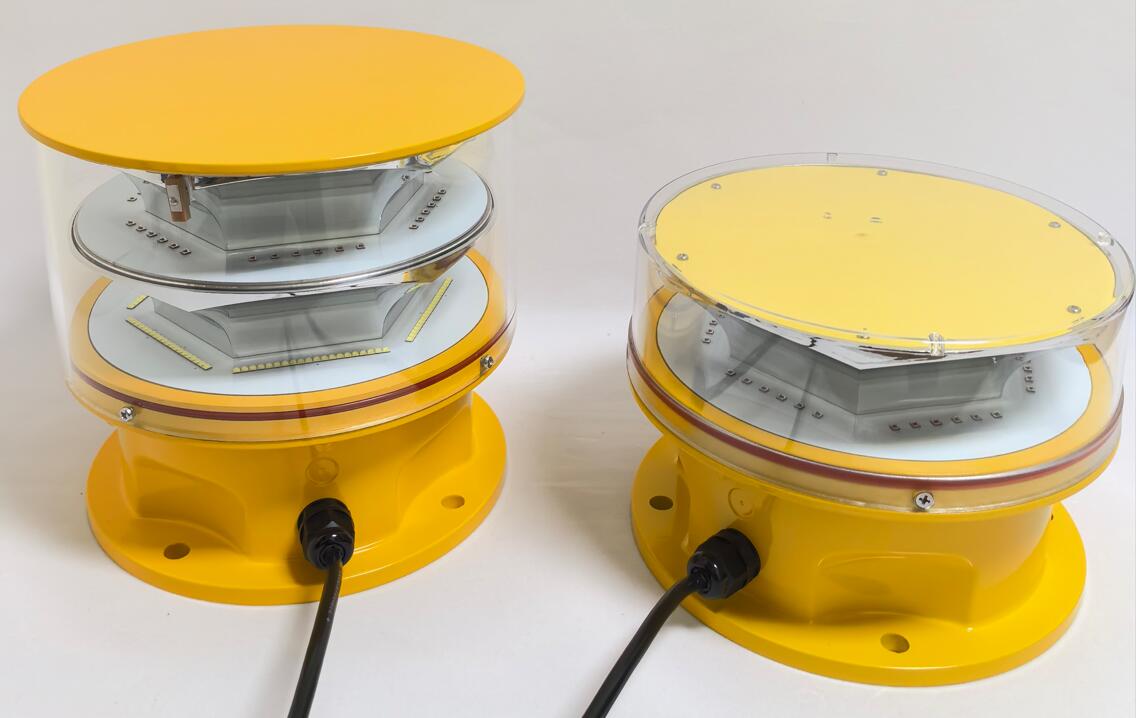Obstruction Lights Airport: Safeguarding Skies with Critical Visual Markers
In the meticulously controlled environment of airport operations, obstruction lights airport systems serve as silent guardians of aviation safety. These specialized lighting solutions mark potential hazards that could endanger aircraft during critical phases of flight. As air traffic density increases globally, the role of obstruction lights airport installations becomes ever more vital. This article examines their purpose, evolving technologies, regulatory framework, and future innovations that are reshaping this essential safety feature.
The Fundamental Role of Obstruction Lights at Airports
Airport environments contain numerous structures that require clear visual identification:
Air traffic control towers
Terminal buildings
Equipment masts
Construction cranes
Perimeter fences
Obstruction lights airport systems provide crucial visual cues that help pilots:
| Obstruction Lights Airport |
Identify potential collision hazards
Maintain safe clearance during approach/departure
Navigate complex airport terrain at night
Operate safely in reduced visibility conditions
| Obstruction Lights |
Types of Obstruction Lights in Airport Environments
1. Red Obstruction Lights
Steady-burning fixtures for permanent structures
Medium intensity for structures under 150m
High intensity for taller structures
2. White Strobe Lights
High-intensity flashing systems
Used for very tall structures (>150m)
Visible from greater distances
3. Dual Lighting Systems
Combine red and white lights
Automatically switch based on daylight conditions
Enhance visibility in all weather
Technological Advancements in Obstruction Lights
LED Revolution
Modern obstruction lights airport installations increasingly use LED technology because of:

80% energy savings versus traditional lighting
50,000+ hour lifespan
Instant on/off capability
Consistent light output over time
Smart Monitoring Systems
Next-generation systems feature:
Remote performance monitoring
Automatic fault detection
Predictive maintenance alerts
Cloud-based management
| Obstruction Lights Airport |
Solar-Powered Solutions
Ideal for remote airport areas
Reduce electrical infrastructure costs
Environmentally sustainable option
Regulatory Standards and Compliance
Global aviation authorities maintain strict requirements for obstruction lights airport installations:
ICAO Standards
Annex 14 specifications
Light intensity requirements
Color chromaticity standards
FAA Regulations
AC 150/5345-43J guidelines
L-810/L-864 specifications
Tower marking requirements
EASA Directives
CS-ADR-DSN standards
EN 60697 compliance
Regular inspection mandates
Installation Best Practices
Proper implementation of obstruction lights airport systems requires:
Strategic Placement
Top of structures
Intermediate levels for tall objects
Perimeter marking
Redundancy Systems
Backup power supplies
Dual-circuit designs
Automatic transfer switches
Maintenance Protocols
Quarterly inspections
Lens cleaning schedules
Photometric testing
Emerging Trends in Obstruction Lighting
1. Adaptive Intensity Control
Automatic brightness adjustment
Weather-responsive systems
Light pollution reduction
2. Wireless Mesh Networks
Interconnected lighting systems
Centralized fault reporting
Reduced wiring complexity
3. Advanced Materials
Self-cleaning nano-coatings
Impact-resistant polycarbonate
UV-stabilized components
Case Study: Major Airport Implementation
A recent upgrade at Singapore Changi Airport demonstrates modern obstruction lights airport solutions:
428 LED units installed
Central monitoring system
40% energy reduction
Zero failures in first 18 months
Future Outlook
The evolution of obstruction lights airport technology will focus on:
AI-powered predictive maintenance
Integration with drone detection systems
Enhanced cybersecurity for smart networks
Sustainable power solutions
Obstruction lights airport systems form an invisible yet critical safety net for global aviation. As airports grow more complex and air traffic increases, these lighting solutions will continue evolving through smarter technologies and stricter standards. Their silent vigilance ensures that every structure - from control towers to temporary cranes - remains clearly visible to pilots, maintaining the impeccable safety record of modern aviation. The future promises even more intelligent, efficient, and reliable systems that will further enhance airport safety worldwide.
